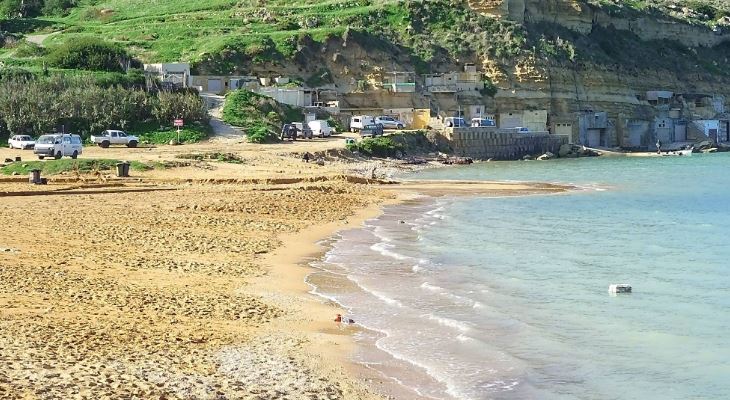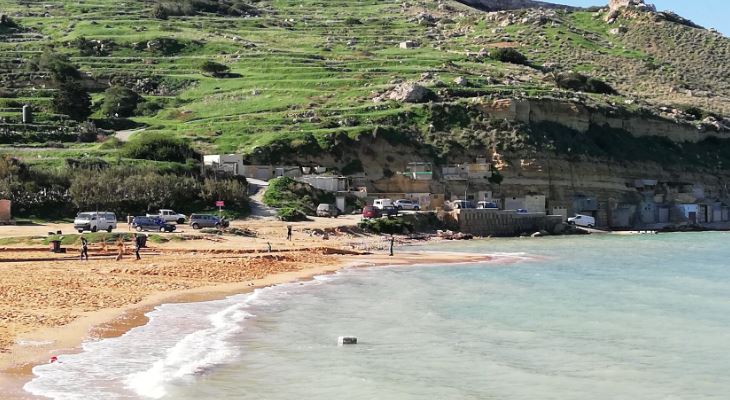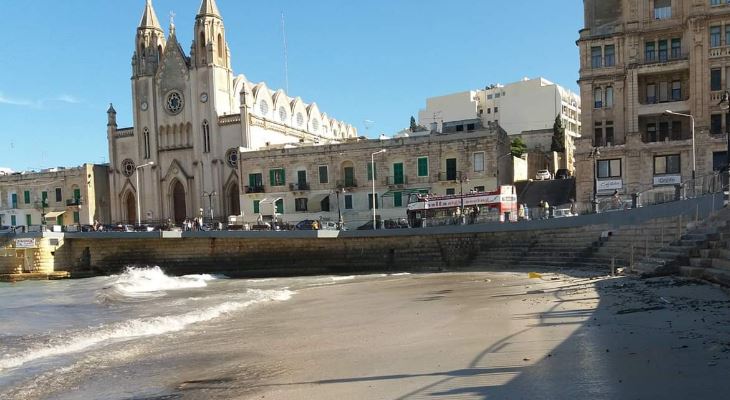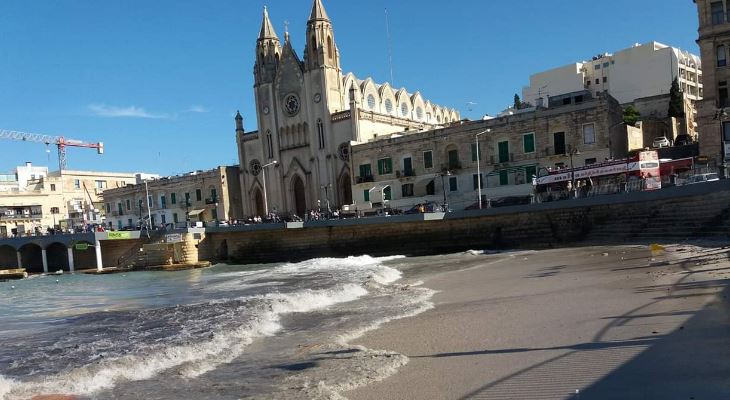The storms have had different effects on the two beaches.
With Malta experiencing heavy rainfall these past few weeks, beaches all over the island have been affected. Gnejna Bay in particular seems to have expanded and naturally, people have taken to Facebook commenting about the miraculous situation. We spoke to marine biologist, Adrian Mallia, who explained more about beach dynamics on the Maltese Islands.

Alan Deidun / Facebook
Any natural beach has a system it follows, starting from inland, to the beach, and finally offshore. In Malta’s case, the inland would be in the form of a valley which brings sediment from fields and rocks down and settles into a marshland or forms sand dunes. Eventually, a beach is formed.
Mr Mallia said that while Gnejna’s beach looks ‘bigger,’ it has actually lost sand after the recent storms. “Natural beach replenishment of Malta’s beaches depends on three factors: the direction of the wind, the force of the wind, and the time of year. In Gnejna’s case, the strong flow of water coming down the valley during the storms, shifted the sand from inland carrying it out to sea, technically losing sand from the beach. That is why it currently looks bigger. The waves will eventually level it out, and the bay will go back to its normal size.” And contrary to popular beliefs, the sand on Malta’s beaches has a terrestrial origin, since it comes from valleys, and not a marine one.

Alan Deidun / Facebook
In comparison to Gnejna Bay, Mr Mallia talks about the current situation at Balluta Bay, after being part of the extensive project. “The Balluta project is actually an experimental replenishment project to help the beach system do what it should be doing on its own: naturally replenishing sand after storms.” Mr Mallia explains that Balluta is not a ‘fake’ bay as many think it is. The bay has always been there but has been severely eroded over the years.

Mark Scerri Simiana: Balluta Bay 21st November 2018
The building of structures such as roads and jetties disrupts the natural process and starves the beach of a flow of sediment. “Building structures in the sea causes the orientation of the waves to change, meaning the beach gets hit from different directions, churning the sand in the process. Balluta had no matrix (rocks or sand that formed the beach) for the sediment to deposit. Thus, the beach dynamics changed so the beach cannot replenish on its own as it should. So, the replenishment project was conducted in order to dredge up sand found offshore in the same bay, and to replenish the bay artificially.” And after the recent heavy rainfall, Balluta did experience a loss of sand, as expected, but surprisingly a lot of sand still remains in the system. “If the matrix survives the winter, the beach might accrete on its own,” says Mr Mallia.

Mark Scerri Simiana: Balluta Bay 21st November 2018
Mr Mallia said that these projects are studied and modelled for years before, and a lot of scientific research goes into each project. Other bays around Malta have been replenished over the years. For example, St. George’s Bay was replenished twice in 2006 and 2015 bringing in new sand from Jordan to create a stronger matrix.